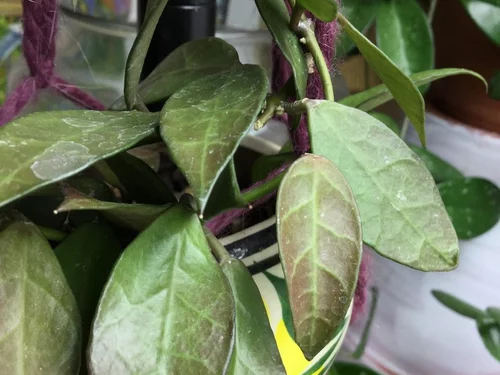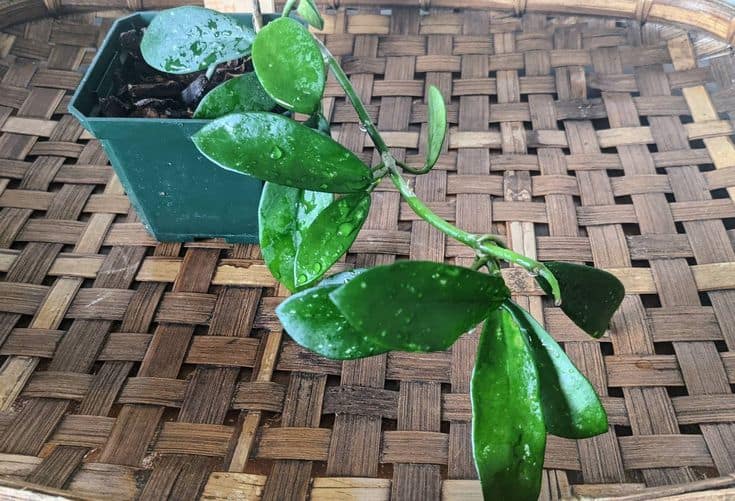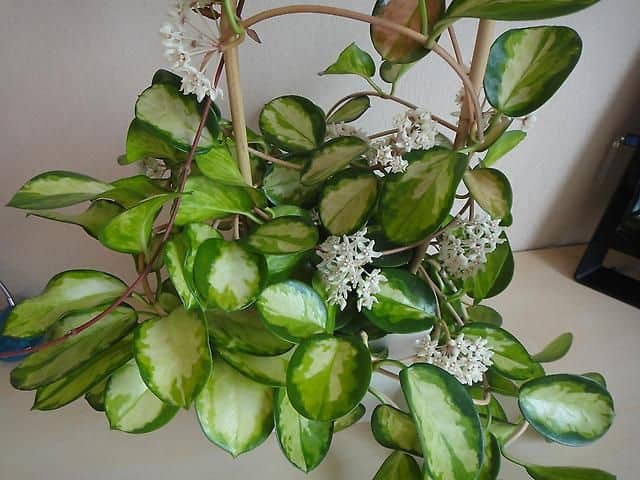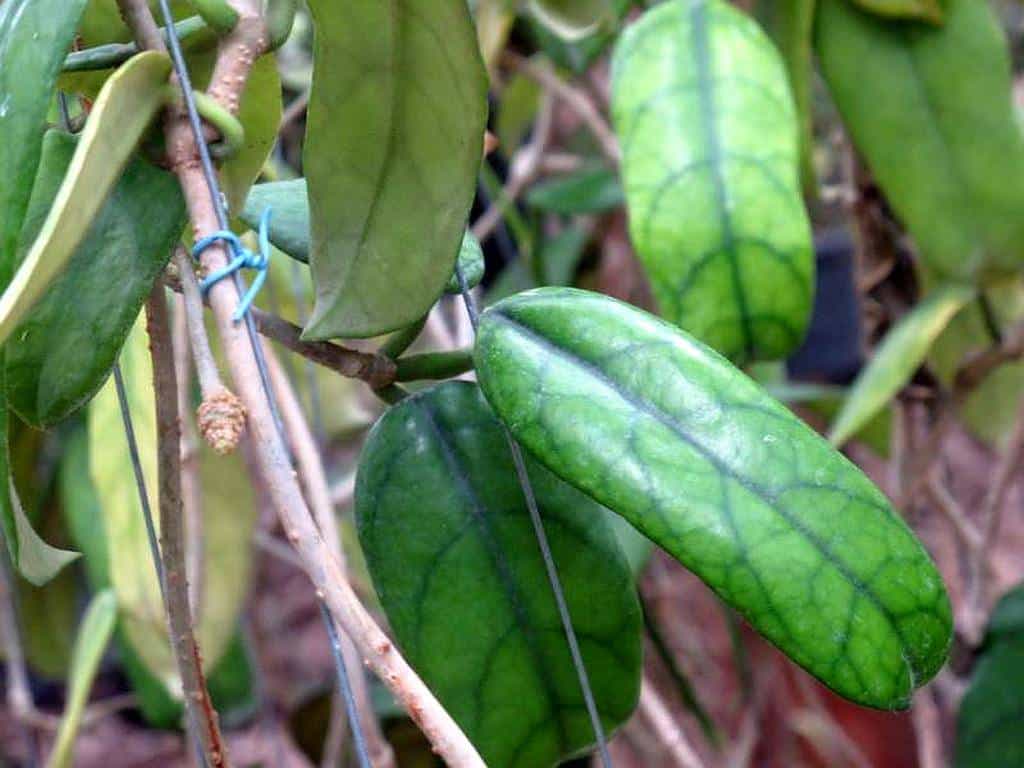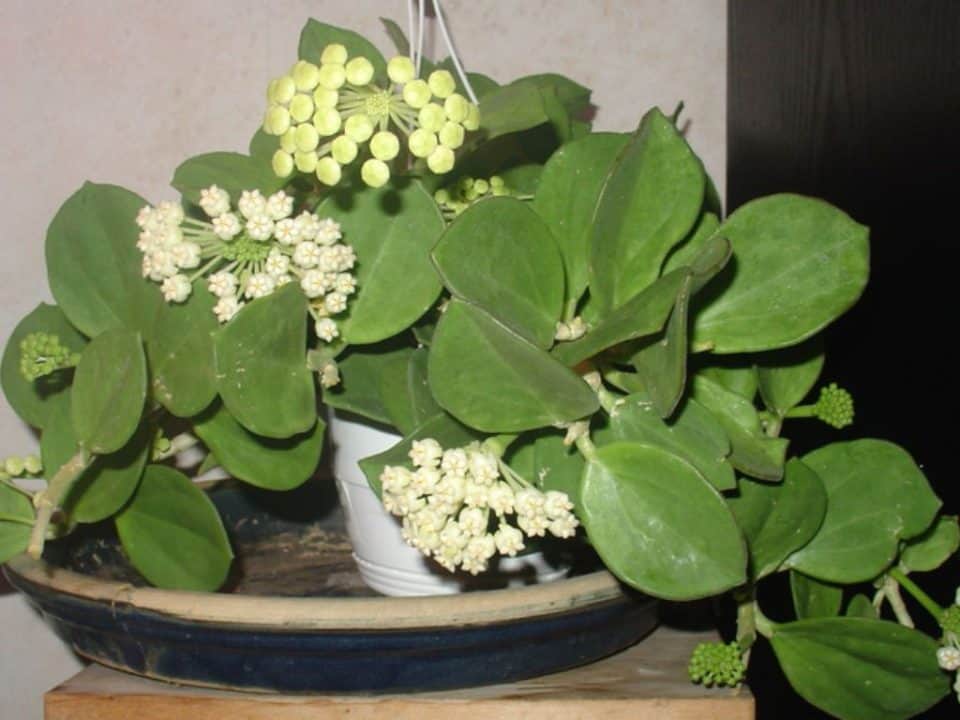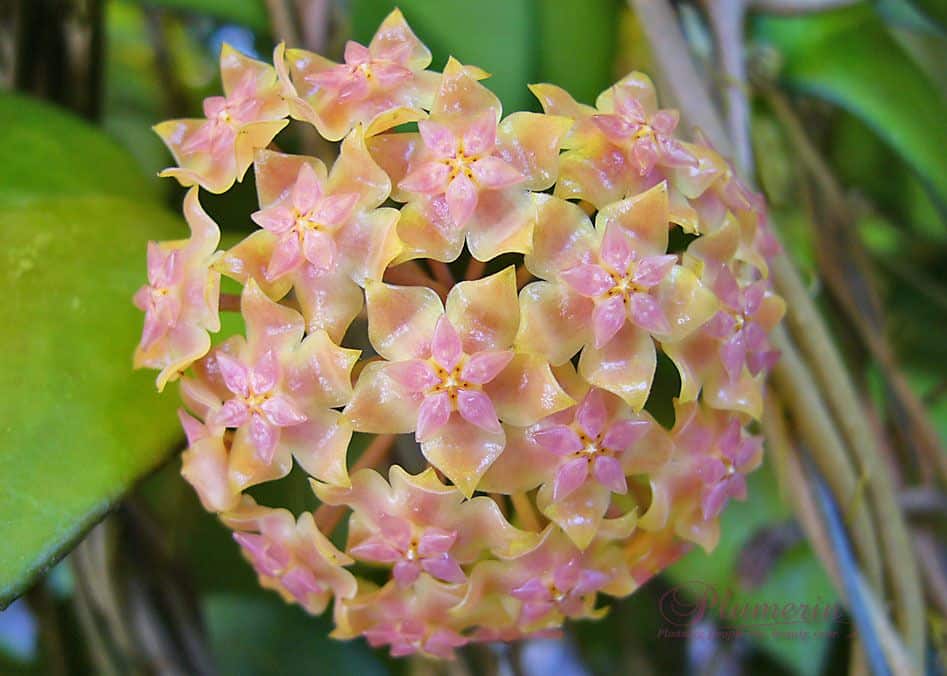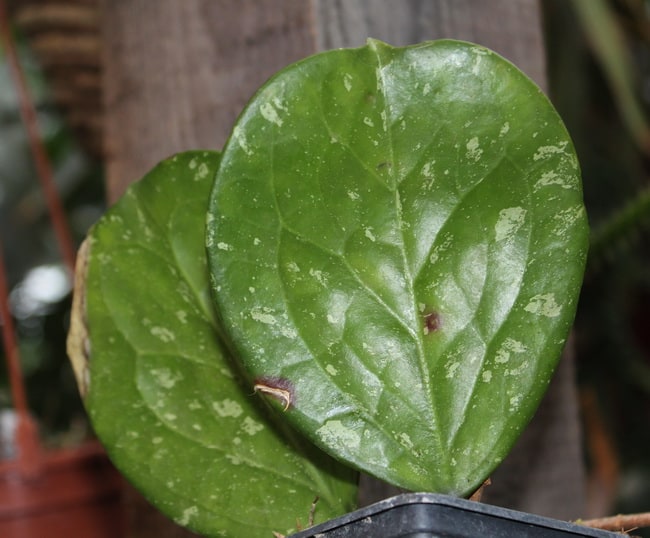Hoya Rebecca, also called hoya cv rebecca, is a cross between Hoya lacunosa Langkawi Island (a smaller variety) and Hoya obscura. Hoya Rebecca has a sister cultivar named, Hoya Rachel. Though they are from the same pod, their seedlings are different.
Hoya rebecca is a wonderful tropical plant with yellow flowers and succulent leaves that thrive in lower-light and moist environments.
It’s easy to take care of, easy to propagate, and makes an excellent addition to any home or office environment, so we’ve put together this hoya rebecca care guide and propagation tips to help you keep it healthy and alive for years to come!
Origin and descriptions
Hoya is a genus of approximately 150 to 200 species of plants in the family Apocynaceae, native to tropical regions of Asia, Australia, and Polynesia. Hoya is native to rainforests and swamps in Southern India, Sri Lanka, Malaysia, Indonesia, and New Guinea.
Some common names for Hoya are wax plant and waxflower. The genus name Hoya comes from Hoja, which means sap in Arabic. The sap from some species has been used as an ingredient in chewing gum.
Hoya rebecca propagation
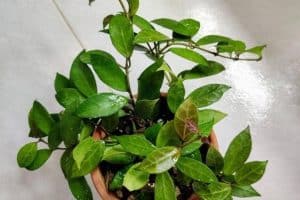
Hoya rebecca plants can be propagated by taking stem cuttings or by leaf propagation. Plants should not be removed from their pots during propagation as they may dry out. The plant is most successfully propagated by stem cuttings.
Remove an 8-inch (20-cm) stem cutting and place in water, rooting hormone is optional. Remove any leaves that will fall below the water level and wait for roots to develop. Once rooted, plant in the soil, and mix with perlite or sand to improve drainage.
In order to propagate by leaf propagation, remove a healthy-looking leaf and place it on top of some moistened sphagnum moss. Be sure that there are no other leaves touching it and keep it warm with indirect sunlight.
Roots should begin developing within 2 weeks’ time, once they have developed you can transplant them into soil mixed with perlite or sand to improve drainage. You can also root hoya rebecca through air layering which involves creating a small hole in a branch and placing sphagnum moss around it, then covering it with plastic wrap.
This allows for longer periods of propagation without having to worry about watering your plant. The only downside is that if you want to move your hoya after it’s been layered, then you will need to dig up your entire plant instead of just moving the stem like when using stem cuttings.
Hoya rebecca care information
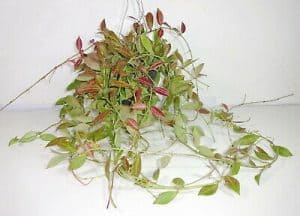
Hoya plants are tropical plants and need warm temperatures year-round. The general rule of thumb is that if you can comfortably put your hand over a leaf, it’s OK for a Hoyas’ requirements.
But temperature does not stop at leaves—you also have to take into account how close a Hoya plant is to heat sources like windows or lamps. It’s best to keep them away from these kinds of heat sources as much as possible.
Light requirements
Hoya rebecca requires bright light, preferably at least 12 hours of direct sunlight daily. If you’re growing your hoyas indoors, it’s best to find a sunny window that receives a lot of light throughout each day, but not in direct sunlight for long periods of time.
Bright fluorescent lights will also work well for plant growth. It’s important to note that there are many species and varieties of hoyas, and some plants may require slightly different light requirements.
While most houseplants will thrive in a normal room with normal light, Hoya rebecca prefers fluorescent light.
They don’t require a lot of direct sunlight, so there’s no need to place them near a window (unless you live in particularly gloomy conditions). In fact, placing your Hoya directly under a bright window can be harmful and may even shorten its lifespan!
Soil/potting mix
Hoyas do best in a soil mix that is rich in organic matter, such as peat moss. Hoyas are often called soil-loving plants because they thrive in these conditions. Never use potting soil for hoyas, as it contains chemicals and other additives that may harm your plant.
Choose a quality potting mix instead, adding sand or sphagnum peat if needed to ensure drainage is excellent and water can flow through freely. The pH should be around 5.5–6.5 (slightly acidic).
The more sunlight you give your hoya, the more nutrients it will absorb from its soil; therefore, you should fertilize with an all-purpose fertilizer every two weeks during active growth periods (spring and summer). Be sure to follow package directions carefully so you don’t over-fertilize!
Watering
First, make sure that you don’t overwater your plant. The soil should be dry to the touch before watering again. Letting a Hoya dry out between waterings allows air to circulate in and around its roots which helps prevent root rot. Watering also provides nutrients to your plant, so if you are fertilizing it, you will want to add fertilizer at each watering.
Fertilizer
Plants need nitrogen, phosphorus, and potassium (N-P-K) to grow and flowering plants need an even more specialized nutrient balance. As a general rule of thumb, if you are growing a houseplant that is not flowering, then use a standard all-purpose houseplant fertilizer with a 1:1:1 N-P-K ratio.
Temperature
Hoya rebecca grows in warm and humid conditions. It should be kept warm with a daytime temperature of 28-35 degrees Celsius, night-time temperatures can drop to 22 degrees but never under 20 degrees.
High humidity is also important for Hoya rebecca so misting it daily will improve the growth rate and blooming frequency. Make sure you have clean water for misting as dirty water can lead to disease.
Humidity
Plants like Hoyas generally do best with a humidity level between 50% and 70%. If your home has a low humidity level (between 10% and 30%), you can increase it by running a humidifier in any room that contains your Hoyas.
However, if there is already a humidifier in use, you should still aim for 50% to 70% relative humidity. In addition to raising it, you can also provide greater comfort to your Hoya plants if you mist them every day or two during their growing season.
Pruning
Some Hoyas have leaves that are very delicate and easy to tear. The first thing to do when repotting is to remove all of the old soil from around your plant, being careful not to damage any of its roots.
This can be done by wiping off loose soil with a damp cloth. If a plant is overgrown, you should then start by cutting off some of its larger stems using pruning shears or a sharp knife. Remove any brown, yellow or diseased parts from it as well.
When to repot
Repot when roots emerge from drainage holes. Repotting is best done in the spring and summer months, but can be done at any time during a plant’s active growth period.
Use a general-purpose potting mix to pot up your plant, with drainage holes and expanded clay pebbles to allow for adequate drainage. Hoya plants like it hot so don’t be afraid to use a little extra fertilizer in your potting mix during periods of active growth.
Dormancy
Every hoya will experience dormancy at some point. When your plant is dormant, it is in a state of rest and recovery from its current growth cycle. During dormancy, plants use stored nutrients to help strengthen their structure so they can support next year’s growth.
It’s important not to water or fertilize your hoya during dormancy. This gives them time to re-energize themselves before beginning new growth again in spring.
Hoya rebecca flower & fragrance
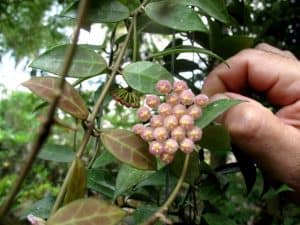
For many people, Hoya (or wax flower) plants have a distinct scent that is often compared to that of vanilla. This scent has earned it a number of nicknames, including waxflower and fragrant-leafed waxflower.
Although these plants are prized for their attractive appearance and sweet aroma, they require care in order to grow properly.
Growth rate
Hoya rebecca is a beautiful, slow-growing houseplant. Over time it will spread outward with stems draping downward to form graceful tufts of long, slender leaves.
To encourage horizontal growth, pinch out some of its terminal buds once in a while to encourage bushy growth. It makes an excellent tabletop specimen or hanging basket centerpiece, or can be trained up as a trellis for use in patios and courtyards.
Toxicity
As with many carnivorous plants, Hoya rebecca can be toxic to people and pets, so do your research before purchasing one. It’s also very important to never let Hoya sap touch your skin or allow it into your mouth, it contains a chemical called urushiol that causes irritation.
You should also wear gloves when handling or transplanting these plants. If you experience an allergic reaction from handling a Hoya, wash your hands thoroughly with soap and water. If you feel like you may have come in contact with Hoya sap, seek medical attention immediately!
USDA Hardiness Zones
The hoya rebecca plant can be grown outdoors in USDA Hardiness Zones 9 and above. The best times for transplanting is in fall or winter, as it doesn’t like to be transplanted during its blooming season.
Pests and diseases
Proper care and maintenance will help prevent most pest and disease problems. Watch for insects crawling on your Hoya rebecca plant or spots on leaves or stems.
If you spot any of these issues, try to figure out what’s causing them so you can treat them immediately rather than wait for a crisis. Most pest infestations are easy to deal with using organic methods.
Just be sure to research appropriate treatments before trying anything new. In many cases, simply removing affected parts will solve the problem.
Hoya rebecca vs sunrise
Hoya rebecca and Hoya sunrise are both popular hoyas for many plant collectors. While they look alike, these plants have different care requirements that affect how easy it is to grow them. Hoya rebecca will thrive in bright indirect light while ‘Sunrise’ prefers direct sunlight.
By knowing how each of these hoyas responds to their respective conditions, you can better meet their needs and provide a happier growing environment that leads to beautiful flowers year after year. In addition to looking at their basic needs, you should also consider what makes each of these hoyas unique.
For example, Hoya rebecca blooms on new growth but ‘Sunrise’ doesn’t. Knowing which characteristics make your plants unique can help ensure you take proper care of them as well as keep your collection diverse!
Conclusions
Hoya Rebecca is a great, inexpensive flowering plant that can be grown in minimal sunlight. The Rebecca variety of hoya is prized for its abundance of flowers and relatively fast growth rate.
However, it does have some specific requirements that must be met to ensure proper growth. Through careful consideration of these factors, you can produce a plant as beautiful as those pictured above in your own home or office.
